
The
spirals of r = a*theta and r = (a/theta)
One of the interesting kinds of graphs when
considering polar coordinates is that of spirals. Let's examine a few simple
equations whose graphs are spirals.
Initially, we'll take a look at r = a*theta for some different values of a and ranges of theta. First, we'll fix a constant at 1 and let the range of theta vary.
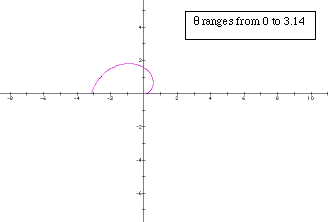
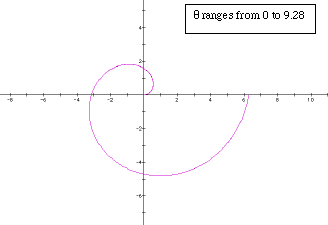
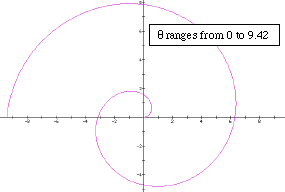
Notice first that as theta increases, r
spirals out from the origin. Notice as well that the graph crosses the x-axis
at multiples of pi and crosses the y-axis at (pi)/2, (3pi)/2, and so on.
Now we'll let theta range from 0 to 6.28 and let a vary.
![]()
![]()
![]()
![]()
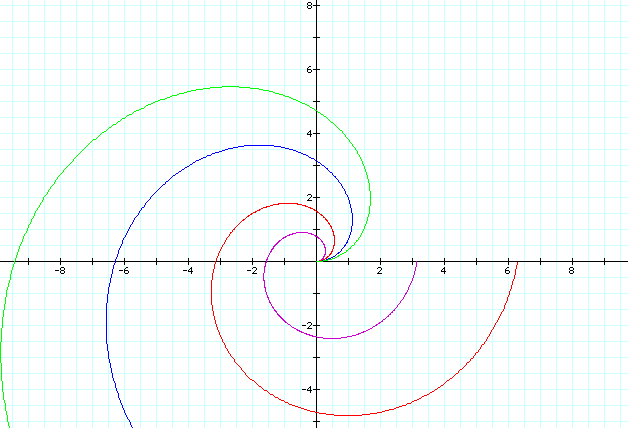
So in the equation r = a*theta, a just
determines the rate at which the graph spirals out from the origin.
Negative values of a simply rotate the spiral 180 degrees. Here's a nice pinwheel graph showing this.
![]()
![]()
![]()
![]()
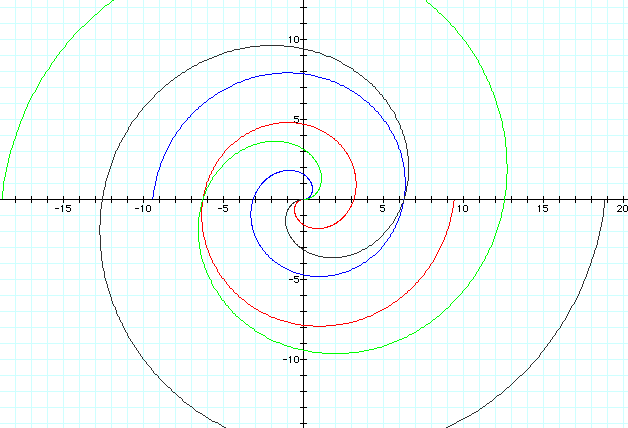
Now lets look at a similar equation: r =
(a/theta). Like before we'll begin by holding a constant at 1 and just look at
different ranges of theta.

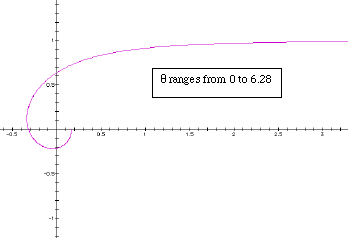
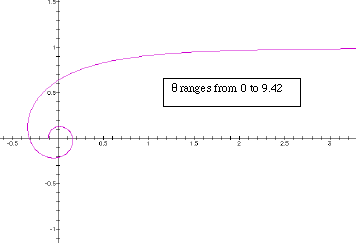
Here we see some striking differences from
the first equation we looked at. The equation r = a*theta is a continuous
spiral out from the origin. The equation r = (a/theta) approaches the origin
from what seems to an asymptote and then it begins to spiral in towards the
origin. Here as well, as the range of theta increases there are more turns of
the spiral.
Now lets let theta range from 0 to 6.28 and let a vary.
![]()
![]()
![]()
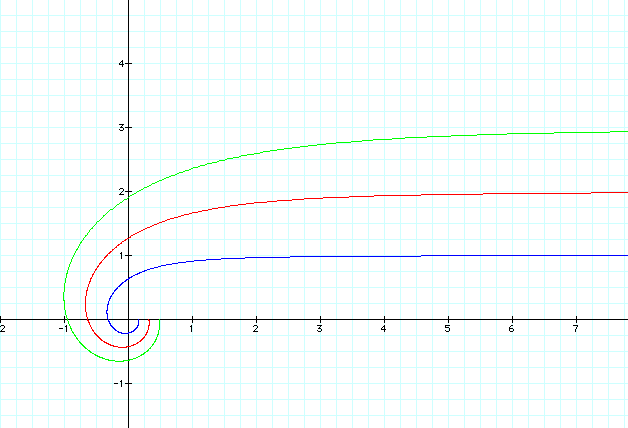
Similar to r = a*theta, changing the value of
a in r = (a/theta) affects the rate that the graph spirals, but in this
equation it is the rate of the graph spiraling towards the origin. We can also
see that a appears to be the value of the asymptote that the graph approaches
the origin from before beginning to spiral.
Finally, let's consider negative values of a for this equation.
![]()
![]()
![]()
![]()

Just like in the first equation, here
negative values of a simply rotate the spiral 180 degrees.
Perhaps the most interesting aspect of this investigation is the dramatic difference in behavior of the spiral depending on whether theta is in the numerator or denominator.